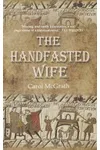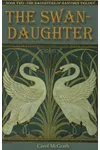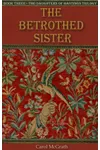Step into the vibrant world of the Daughters of Hastings, where the drama of the Norman Conquest unfolds through the eyes of resilient women! Carol McGrath’s historical fiction trilogy whisks readers to 11th-century England, blending meticulous research with heartfelt storytelling. This series isn’t just about battles—it’s about love, loss, and the fierce spirit of women navigating a changing world.
With heroines like Edith Swanneck and Gunnhild, Daughters of Hastings offers a fresh perspective on a pivotal era. If you love immersive historical tales that pulse with emotion and intrigue, this trilogy is your next must-read!
How Daughters of Hastings Began
Carol McGrath, a historian with a passion for uncovering silenced voices, crafted the Daughters of Hastings trilogy inspired by the Bayeux Tapestry’s lesser-known female figures. A former teacher with degrees in history and creative writing from Queens University Belfast, McGrath was captivated by the stories of noblewomen during the Norman Conquest. Her debut novel, The Handfasted Wife, launched the series in 2013, weaving fact and imagination into a gripping narrative that celebrates women’s strength.
McGrath’s research, rooted in medieval history, brings authenticity to every page. Her goal? To shine a light on the women who shaped history, even as their stories faded into the shadows of time.
The Heart of Daughters of Hastings
The trilogy kicks off with The Handfasted Wife, following Edith (Elditha) Swanneck, the handfasted wife of King Harold Godwinson. When Harold ascends the throne in 1066, Elditha is set aside for a political marriage, only to face betrayal and loss after the Battle of Hastings. Her journey of survival and reconciliation is a testament to resilience. The Swan-Daughter shifts to Gunnhild, Elditha’s daughter, who elopes with a Norman knight in 1075, navigating love and ambition in a post-Conquest world. The Betrothed Sister completes the saga, tracing Gytha (Thea), Harold’s daughter, as she seeks exile and love in Denmark and Kiev.
McGrath’s storytelling weaves themes of family, power, and personal freedom against the backdrop of Anglo-Saxon and Norman clashes. The series explores the tension between pagan traditions and the rising influence of the Roman Church, with vivid details of medieval life—think embroidery, book-making, and bustling cities like Canterbury and Exeter. Readers praise the trilogy for its rich historical texture and strong female leads who defy their era’s constraints.
The Daughters of Hastings stands out for its focus on women’s perspectives, offering a counterpoint to male-dominated narratives of 1066. McGrath’s lyrical prose and deep research make each book a portal to a turbulent yet fascinating past.
Why Daughters of Hastings Resonates
The Daughters of Hastings has carved a niche in historical fiction, captivating readers with its blend of education and entertainment. Fans on Goodreads rave about its “thoughtful and evocative” storytelling, awarding high praise for its nuanced portrayal of women as relics of a fading Anglo-Saxon order. The trilogy’s emphasis on female agency resonates with modern audiences, while its detailed world-building appeals to history buffs.
McGrath’s work has also sparked interest in the Norman Conquest’s lesser-known stories, inspiring readers to explore this era further. Shortlisted for the Romantic Novelists’ Association Awards, The Handfasted Wife set the stage for a series that continues to enchant with its timeless themes of courage and survival.
- Publication Years: 2013–2015
- Number of Books: 3 (The Handfasted Wife, The Swan-Daughter, The Betrothed Sister)
- Setting: 11th-century England, Denmark, and Kiev
- Notable Recognition: The Handfasted Wife shortlisted for the Romantic Novelists’ Association Awards
Grab The Handfasted Wife and dive into the Daughters of Hastings’s spellbinding world of historical fiction! Whether you’re a history lover or a fan of strong heroines, this trilogy promises an unforgettable adventure.


